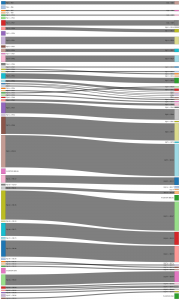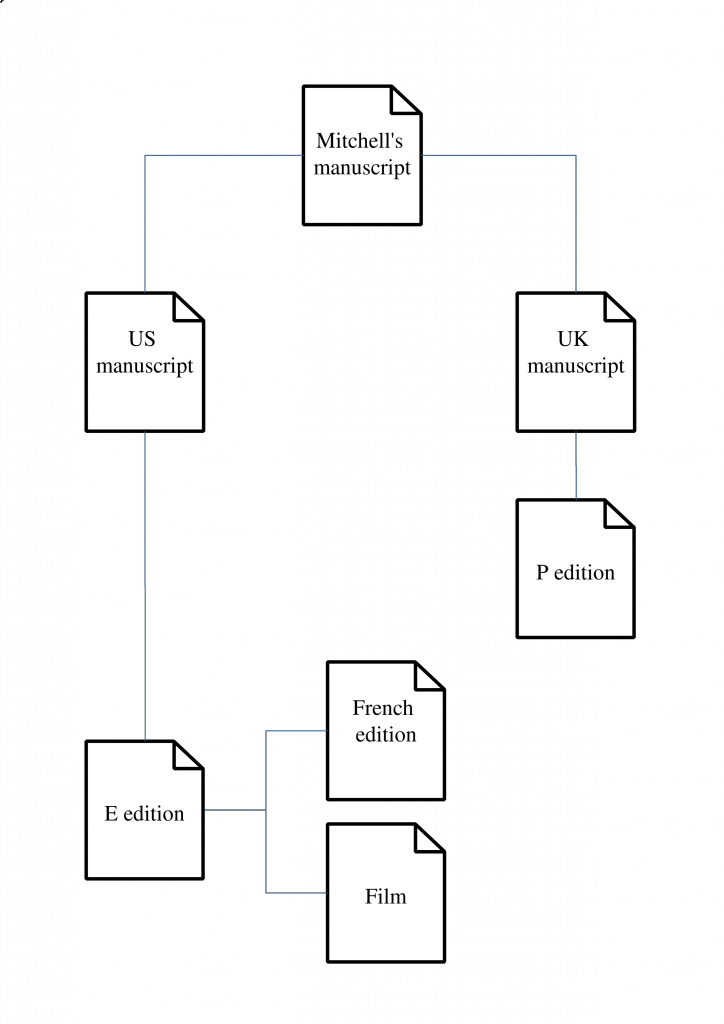A short film has been made about the rediscovery of four medieval books in the Birkbeck library.
Watch the film here:
Image credit: © 2016 Birkbeck Media Services / Dominic Mifsud
A short film has been made about the rediscovery of four medieval books in the Birkbeck library.
Watch the film here:
Image credit: © 2016 Birkbeck Media Services / Dominic Mifsud
This is a video of an event held at Birkbeck, University of London as part of Birkbeck Artsweek (a week of free public arts events which runs annually). It features Professor Anthony Bale and Dr Isabel Davis talking about the Birkbeck manuscript collection, which was recently rediscovered in Birkbeck college library. It was an event held for a general audience. If you’re interested in this, you might also be interested in Anthony’s previous blog post about the books.
Contents:
Introduction to the event – Isabel Davis
The Birkbeck Books – what they are and where they’ve come from and how they got lost – Anthony Bale (00:56)
Medieval Books of Hours – what they are, how they were used – Isabel Davis (26:00)
It will, of course, be no surprise to textual scholars and members of the Material Texts Network that textual variance is rife in works of contemporary fiction. However, for a number of reasons – pertaining to copyright, digitisation, and an assumption among many hermeneutic/theoretical critics that texts published around the world are self-identical – textual variance remains an under-studied phenomenon for those working on novels that are fresh off the (digital) press.
When I was recently working on David Mitchell’s Cloud Atlas [2004], however, I found a range of variants that exceeded my usual expectations of accidentals by quite some range. One of the chapters (‘An Orison of Sonmi ~451’) was almost totally rewritten in US and electronic editions of the text. I decided to investigate this further, even wondering whether the author had deliberately submitted different manuscripts to different publishers in an attempt to play a trans-textual game (the chapter in question does, after all, focus on storing the words of a death-penalty convict within a state archive for preservation and stability).
It turns out, as ever, that the differences are due to a social flaw in the editing process and not due to any technological aspect. Indeed, in 2003, David Mitchell’s editorial contact at the US branch of Random House moved from the publisher, leaving the American edition of Cloud Atlas without an editor for approximately three months. Meanwhile, the UK edition of the manuscript was undergoing a series of editorial changes and rewrites that were never synchronised back into the US edition of the text. When the process was resumed at Random House under the editorial guidance of David Ebershoff, changes from New York were likewise not imported back into the UK edition. In the section entitled ‘An Orison of Sonmi~451’ these desynchronised rewritings are nearly total at the level of linguistic expression between UK and US paperbacks/electronic editions and there are a range of sub-episodes that only feature in one or other of the published editions.
What I really wanted to know here, though, was what these edits actually did to the text. How would close reading be affected by these changes? What was actually different, and where? Since the extent of linguistic changes would be drastic, I compared functional questions and responses in this chapter (which takes the form of an interview). In other words, if, in terms of plot development, a Q&A was doing the same job in both editions, then I marked the sections as identical. I then modified the D3.js Sankey chart software to allow unlinked nodes and… hey presto, we can roughly visualize the changes to the syuzhet introduced through the editorial process.

Reading from top to bottom of this diagram on both sides allows us to see clearly reorderings and omissions between editions.
But… so what? “We” know that texts vary and that this is likely to be the case in the contemporary as much as in medieval studies. But that’s not the case for everyone. Indeed, as James F. English has noted, the canon of contemporary fiction in the academy is broadly determined by the literary prize culture circuit. Yet, with such variance, who can even be sure that all members of an international jury are reading the same text? What about online international book groups? What about local book groups where some readers are using a digital edition? What about the mass of academic criticism that has conducted close reading of one or other versions but never noticed these differences?

So much for close reading…
The full version of the article is available to read at: Eve, Martin Paul, ‘“You Have to Keep Track of Your Changes”: The Version Variants and Publishing History of David Mitchell’s Cloud Atlas’, Open Library of Humanities, 2 (2016) <http://dx.doi.org/http://dx.doi.org/10.16995/olh.82>
When is a book not a book? The destruction of a book – through burning, through recycling, through iconoclasm, for instance – places great emphasis on its materiality, its power as a physical object that must be destroyed. Conversely, when nobody knows about a book’s existence, it simply disappears – both the physical book and the textual lives inside it. When a book is unknown and hidden away it is perhaps reduced to the bare facts of its existence: a piece of matter unread, unloved, unvalued, uncatalogued.
Books disappear easily when they are not catalogued; it is through catalogues and finding aids that medievalists find their sources. When I joined Birkbeck College as a lecturer in 2002, I was excited to find that the College owned one manuscript, which I knew about from Neil R. Ker’s magisterial four-volume catalogue, Medieval Manuscripts in British Libraries. But time passed, I became diverted by other projects, and I never got round to looking at the manuscript. And then I more or less forgot about it.
This year I have been teaching a class on ‘Medieval Material Texts’ for students on Birkbeck’s MA in Medieval Literature & Culture. It struck me that it would be so much easier to talk about medieval books if one had one to show to the students – to talk about the binding, the physical construction of a book, the stains and the damage, the signs of a book’s lived life, as well as the text, the decoration, the illustration. So, somewhere in the back of my mind, I remembered Ker’s description of one manuscript, and looked it up, and sent an email off to my subject-librarian at Birkbeck’s library.
It was as much as a surprise to the College as it was to me to  discover that Birkbeck houses a small collection of not one but four medieval books (three manuscripts and one incunabulum). I quickly arranged to view the books, three of which have not been catalogued and do not seem to have been viewed since around 1991. The books comprise a sort of ‘capsule collection’: they represent several important developments in European religious culture, in book history, and in literary tastes.
discover that Birkbeck houses a small collection of not one but four medieval books (three manuscripts and one incunabulum). I quickly arranged to view the books, three of which have not been catalogued and do not seem to have been viewed since around 1991. The books comprise a sort of ‘capsule collection’: they represent several important developments in European religious culture, in book history, and in literary tastes.
The books are:

The Birkbeck Hours (sine numero): a beautiful small book of hours, from northern France, dated to c. 1400.
MS L.I: the rules and customs of the Capitoli della Compagnia di S. Girolamo of Siena, dated to the early fifteenth century.
MS 108.C: a manuscript of the Sententiae Sapientiae, attributed to Aristotle, Plato, Socrates, and Seneca, and which once belonged to the Monastery of St Zeno, Verona; dated to c. 1450.
Dictys Cretensis & Dares Phrygius (sine numero): a skin-bound volume, a much-read history of the Trojan War, printed at Venice, 1499.

One of the manuscripts, the Birkbeck Hours, was given to the College in 1977 by the widow of Dr Charles Fox (1897-1977), a lecturer at Birkbeck who later became a distinguished mathematician at Concordia University in Montreal. How the other three manuscripts reached Birkbeck is not known at present, although we do know that MS L.I was purchased by the College in the 1950s, probably to be used as a teaching aid. Ownership inscriptions in MS 108.C show that, in the nineteenth century, it belonged to a Peter John Bruff and, later, the Victorian scholar and antiquarian R. A. H. Bickford-Smith (1859-1916).
The books open a window onto readers and writers from hundreds of years ago; by coming back into public view, they can delight and instruct again. A more detailed examination of the books will, in time, yield much more about the lives these fascinating books have lived, and continue to live.
NB: The books are not currently available for public view, but it is hoped that a digitisation project will make them available online in due course.